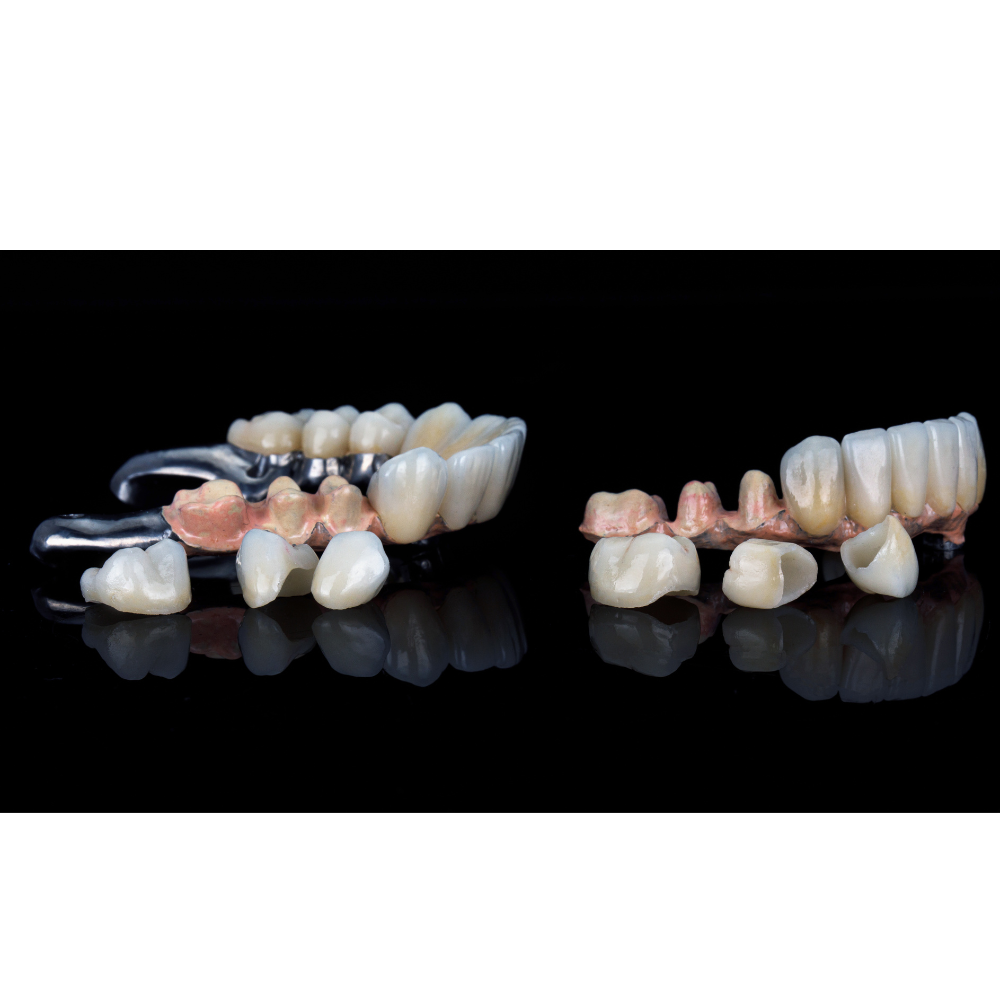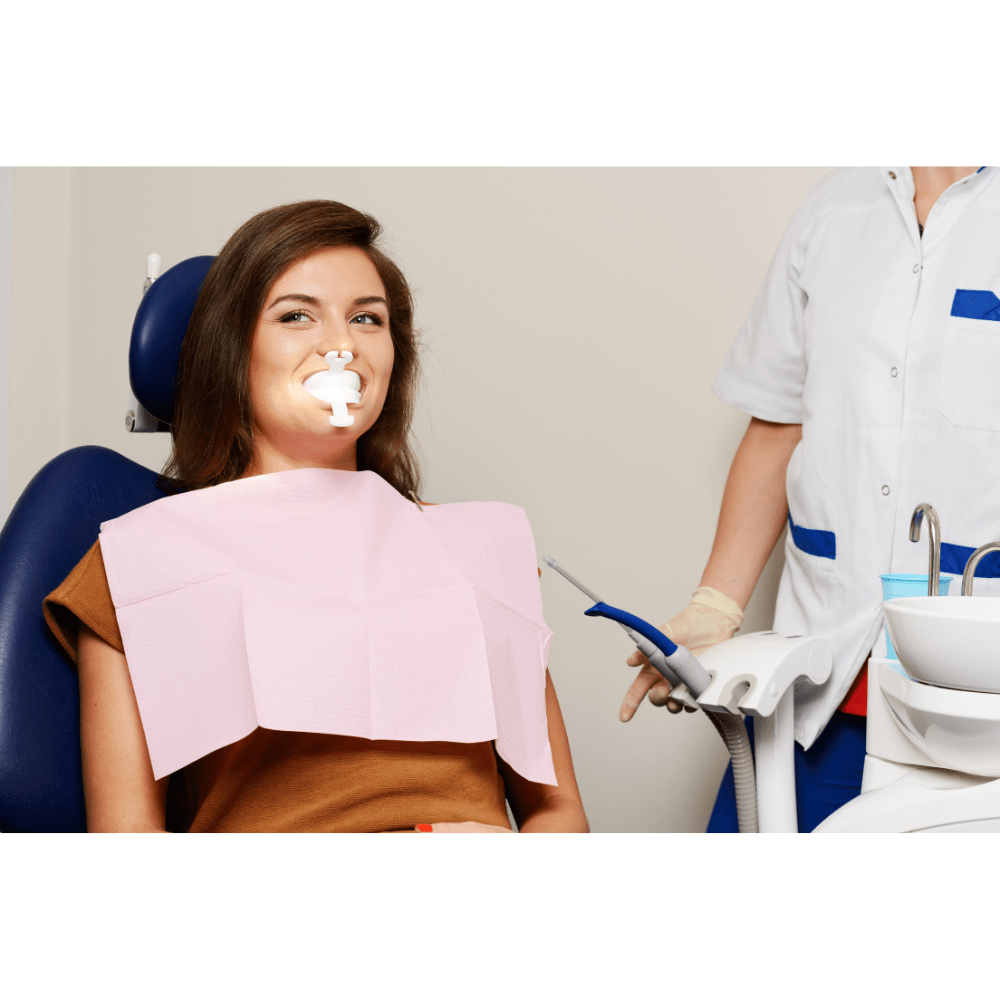How Do You Floss a Dental Bridge? | Expert Guidelines
Dental bridges act as prosthetic replacements and enhance both the aesthetics and functionality of your teeth. Flossing of your dental bridge involves a delicate balance of thoroughness and tenderness. Bridges consist of artificial materials which makes them more powerful to damage if not handled with care.
By implementing proper flossing bridge techniques guided by the experts into your daily routine, you can maintain good oral health and the life span of your dental bridge while safeguarding your overall oral well-being. Now, let’s talk about the ways of flossing a dental bridge to ensure ideal oral hygiene and bridge longevity.
How Do You Floss a Dental Bridge?
Dental bridge flossing requires a combination of accuracy and care to effectively eliminate plaque and food debris. Here is the step-by-step procedure,
Choose the Right Flossing Tool:
You can use a floss threader or super floss specifically designed for cleaning around your dental bridges. These instruments are flexible and will allow you to move the floss under the bridge with ease.
Use Gentle Pressure:
Once the bridge floss is in place, apply gentle pressure as you move it back and forth between the teeth and under the bridge. Try not to compel the floss, as this will cause irritation and damage to the surrounding gum tissue.
Clean Each Side of the Bridge:
Be thorough in cleaning both sides of the bridge, ensuring that you remove any trapped food particles or plaque buildup. Move the floss along the entire length of the bridge to effectively clean all areas.
Thread the Floss Carefully:
Gently insert the floss threader or super floss underneath the bridge and make sure it reaches the gum line. Take as much time as is needed to avoid any discomfort or damage to the bridge.
Rinse and Repeat:
After flossing around the whole bridge, rinse your mouth thoroughly with water to remove any loosened debris. Repeat the flossing process to ensure a thorough cleaning, if required.

How to Use Floss Threaders for Bridges?
For using floss threaders for bridges,
- Cut a piece of dental floss roughly 18 to 24 inches long. This will allow you to have enough floss for bridges to work with while threading it through the bridge.
- Insert one end of the bridge floss through the loop or eye of the floss threader. Pull the floss through until you have an equal length on each side of the threader.
- After that carefully guide the tip under the bridge, which starts from one side and moves to the other.
- Now gently pull one end of the floss through the loop or eye of the threader. Keep pulling it until you have a sufficient length of floss threaded under the bridge.
- Hold both ends of the floss and gently float it back and forth between the teeth and under the bridge.
- Move the floss threader to the next gap between the teeth and repeat the threading and the dental bridge flossing process. Go on until you have cleaned all areas under the bridge.
How Dental Floss for Bridge Works?
The threadable design of dental floss for your bridge allows it to reach under bridges. It removes plaque, food particles, and debris that brushing alone cannot reach. It effectively cleans the teeth and under the bridge, and the flossing bridge helps prevent gum disease, decay, and bad breath.
Floss for bridges is also an essential tool to preserve your overall oral health, prevent dental issues, and ensure the durability of dental appliances.
Why You Need Dental Bridge Flossing?
Dental bridge flossing is essential for multiple reasons:
Effective Plaque Removal: Dental bridges create tight spaces where plaque can accumulate, leading to gum disease and decay. Flossing will help you remove it from these sites and prevent you from oral health issues.
Preventing Bad Breath: Bacteria trapped around dental bridges can cause bad breath. Flossing will remove these bacteria and keep your breath fresh and your mouth healthy.
Preventing Gum Disease: Plaque buildup around dental bridges can irritate your gums which leads to inflammation and gum disease. Floss bridges will remove bacteria and debris and reduce the risk of gum problems.
Maintaining Bridge Integrity: Food particles trapped around bridges can contribute to bacterial growth and compromise the bridge’s integrity after some time. To prevent this buildup, and prolong the lifespan of the bridge, flossing bridge is the best option.

How Often Should Flossing Under a Bridge Done?
Flossing under a dental bridge should be done multiple times a day. Consistency is crucial for maintaining optimal oral health.
Aim for several times flossing under a bridge in a week to ensure cleanliness around the bridge. It must fulfill your oral health needs and the condition of your dental bridge. If you find flossing your dental bridges challenging or uncomfortable, alternative dental hygiene methods can still effectively clean around the bridge, examine them as well.
Alternative Dental Hygiene Tips
Interdental Brushes:
These small brushes are designed to clean between teeth and around dental appliances like bridges. They can be easier to use and more comfortable for you if you are not comfortable with flossing.
Dental Sticks and Picks:
These are small tools with thin and flexible tips that you can use to clean between teeth and around dental bridges. They are gentle on the gums and can be easier to maneuver floss for bridges.
Antimicrobial Mouthwash:
You can rinse with an antimicrobial mouthwash which can also help you reduce bacteria around dental bridges and promote overall oral hygiene.
Tip Stimulators:
These rubber-tipped instruments are designed to stimulate and massage the gums to remove the debris. Tip stimulators are gentle on the gums and can promote blood circulation and enhance your gum health.
End Tuft Brushes:
End tuft brushes feature a small cluster of bristles at the tip of the brush which allows for precise cleaning around the bridges. They can reach tight spaces and difficult-to-access areas where debris tends to accumulate.
FAQs
What is the best way to floss a bridge?
The best way to floss a bridge is to use a floss threader or interdental brush to clean underneath the bridge and to reach the gum line. Move the floss or brush back and forth between each gap to remove any debris.
Is it hard to floss a bridge?
Flossing a dental bridge can be a harder challenge for you than flossing your natural teeth due to tight spaces and potential discomfort.
Can you waterfloss a bridge?
Yes, you can water-floss a bridge. Water flossers use a stream of water to clean between teeth and around dental bridges.
What happens if you don’t floss under a bridge?
If you don’t floss under a bridge it will result in oral health problems, including gum disease, decay, bad breath, and potential damage to the bridge itself.



